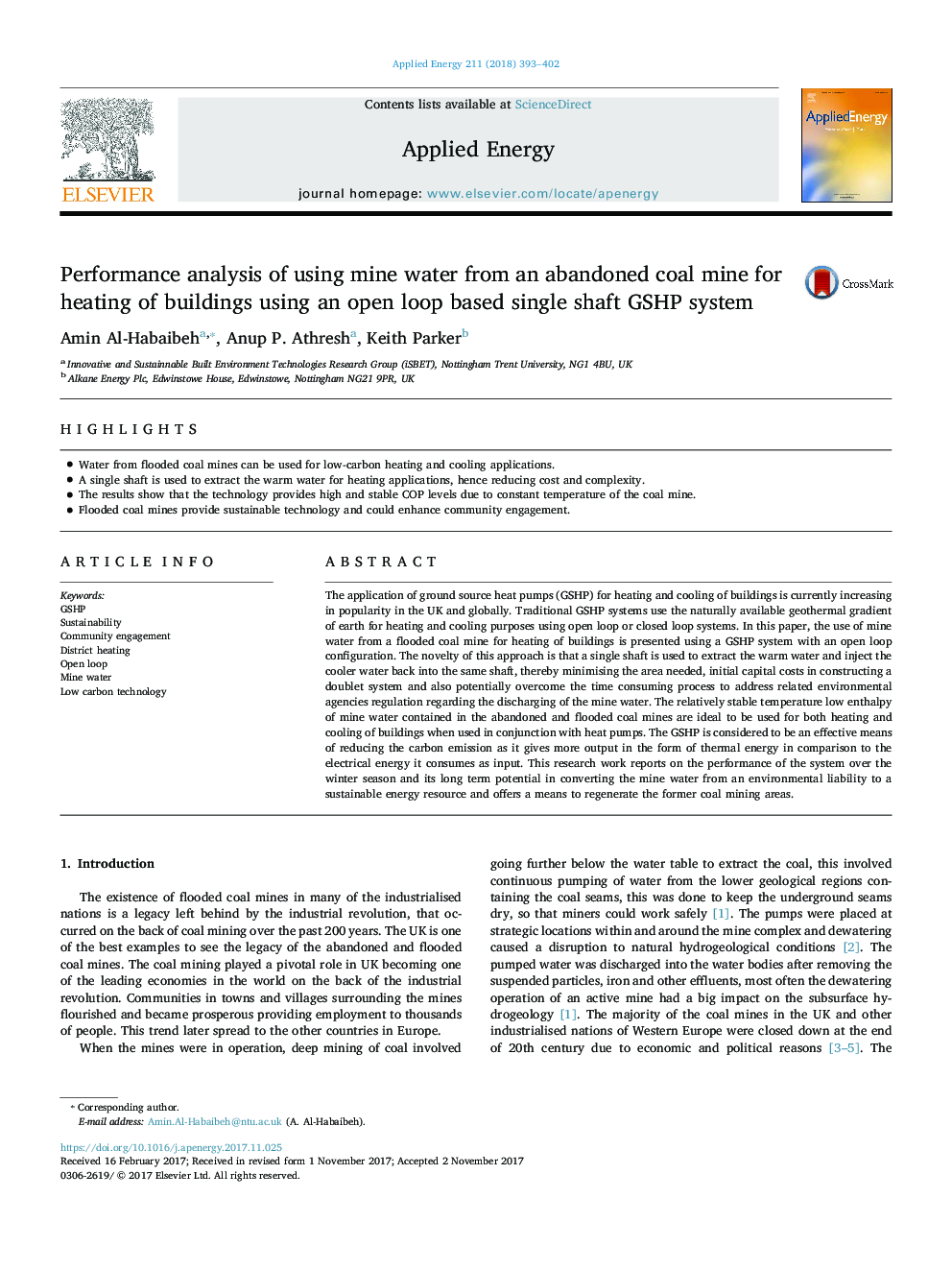| Article ID | Journal | Published Year | Pages | File Type |
|---|---|---|---|---|
| 6681230 | Applied Energy | 2018 | 10 Pages |
Abstract
The application of ground source heat pumps (GSHP) for heating and cooling of buildings is currently increasing in popularity in the UK and globally. Traditional GSHP systems use the naturally available geothermal gradient of earth for heating and cooling purposes using open loop or closed loop systems. In this paper, the use of mine water from a flooded coal mine for heating of buildings is presented using a GSHP system with an open loop configuration. The novelty of this approach is that a single shaft is used to extract the warm water and inject the cooler water back into the same shaft, thereby minimising the area needed, initial capital costs in constructing a doublet system and also potentially overcome the time consuming process to address related environmental agencies regulation regarding the discharging of the mine water. The relatively stable temperature low enthalpy of mine water contained in the abandoned and flooded coal mines are ideal to be used for both heating and cooling of buildings when used in conjunction with heat pumps. The GSHP is considered to be an effective means of reducing the carbon emission as it gives more output in the form of thermal energy in comparison to the electrical energy it consumes as input. This research work reports on the performance of the system over the winter season and its long term potential in converting the mine water from an environmental liability to a sustainable energy resource and offers a means to regenerate the former coal mining areas.
Keywords
Related Topics
Physical Sciences and Engineering
Energy
Energy Engineering and Power Technology
Authors
Amin Al-Habaibeh, Anup P. Athresh, Keith Parker,
